Active Projects
Open Balkan macroeconomic forecasts
Within the “Assessing and streamlining the potential of the Open Balkan Initiative” project, the Center for Economic Analyses (CEA) from Skopje published a macromodelling report within the research task 4: Open Balkan macroeconomic forecasts.
Moreover, aiming to investigate the economic benefits/loss of being/not being part of the OB initiative for countries in the WB, individually and as a group (region) with full and partial integration, versus the Berlin Process, through the prism of long-term forecast of key macroeconomic indicators Policy paper and Policy note have been published.
3 Studies on Disparities & Similarities of the WB6 countries
A team of experts, led by CEA within the auspices of the Project Assessing & Streamlining the Potentials of the Open Balkan Initiative prepared 3 Studies:
Rationale:
The point with the TASK 2 is that each of the WB6 countries have its own characteristics thus, there are disparities within and among the countries but also similarities. That is why we want to analyze the disparities and similarities at EU’s NUTS 3 regions depending on the data available. The idea is that given the OBI MoUs and the OBI Agreements and the EU’s freedom of movements some NUTS regions of the WB6 countries might have more similarities among themselves than the others. Thus, those NUTS 3 regions that are clustering e.g., are showing similarities in some demographic attributes and/or some socio-economic attributes might be a platform for more efficient implementation of the EU’s freedom of movements and the objectives of the OBI MoUs and OBI Agreements. This does not mean that the regions that are with more disparities cannot achieve the same objectives. It just demonstrates that for more similar regions the policies might be implemented more efficiently as they have similar challenges. Those regions that show larger disparities will probably need more resources to reach convergence and less inequalities.
There are three Volumes of this Task 2 report:
Volume 1: Country disparity analyses: Desk research
In Volume 1 we find that there is internal migration to the urban centres that attracts population. The concentration of the population in the WB6 countries is found in municipalities with a population of up to 30,000, e.g., in 69% of total population of all 491 municipalities. In Albania half the population live in 7 cities with a population of more than 100,000 and in Kosovo, similar to Albania, half the population lives in 8 of the 38 municipalities. In Montenegro, 23 of the 25 municipalities have a population of up to 50,000 (half the population lives in 4 of the 25 municipalities). In B&H, half the population lives in 84% of the municipalities. Regional development is organised on the NUTS 3 level for planning purposes in North Macedonia, Albania and Kosovo where disparities have persisted for a decade. In Serbia, NUTS 3 is used for the purpose of administrative deconcentration, while for development purposes there are four regions.
The WB6 countries do not trade much among themselves when measured as the top five trade partners. Serbia is prominent as an exporter to all of the WB5 countries. Albania has a high concentration of exports to Italy (of 45%) and similarly North Macedonia to Germany (47%). Serbia and Albania do not include even one WB6 country as their top five importers. Serbia’s exports and imports are basically equal to the sum of the other five countries.
WB6 convergence is crawling toward EU. Namely, the WB6 countries GDP per capita in PPS relative to the EU-27 rose from 33% to 38% in 10 years. With this pace it will take WB6 to reach EU average in 70 years (if EU keeps the today’s GDP level for 70 years).
The WB6 countries today are still trapped in mediocracy and becoming poorer. Worse still, the WB6 countries are at risk of becoming caught in a talent development trap (EU 2023). The ageing and shrinking working-age population (inverted age pyramid for North Macedonia for example) along with the lack of economic dynamism combined with a larger share of NEET, as well as regions experiencing the significant departure of young people, have led to a decrease in the supply of highly skilled and younger workers.
The regional inequalities within the WB6 countries reveal that on the local level (especially NUTS 3 level) the inequalities are less pronounced. This means that giving priority to addressing the regional potential of the similarities in the NUTS 3 regions over addressing convergence with the EU on the NUTS 1 level might be a more efficient policy choice for creating the opportunity for the equality of the regions’ potential, e.g., the focus could be given to economic growth that is inclusive to ensure that the benefits are spread to all regions.
Volume 3: Country disparity analyses: Cluster analysis
The similarity of regions in the Western Balkan countries was observed using cluster analysis on the NUTS 3 level of disaggregation (where data were available), navigating certain segments of Western Balkan economies using one or more indicators for each segment.
In addition, the analysis based on economic activity indicators shows a cluster in which entities show a large share of agriculture in the economy have a low GDP per capita level, as well as the low participation of other analysed sectors in GDP. On the other hand, entities with the biggest GDP per capita level overall, as observed in the capital cities of Serbia, North Macedonia and Albania, as well as Montenegro as a whole, are associated with trade, transportation and tourism’s high participation in GDP. Another cluster shows that entities in which industrial and construction activity dominate generally have an above-average level of GDP per capita. These findings may be an important consideration while devising economic policies on the regional level.
Observe the maps from the Cluster analysis here: Maps
Read the peer review and editor letters for the 3 studies Peer Review & Editor Letter on Vol 1, Vol 2 & Vol 3 studies
Short version in a form of Executive summary of the three studies.
Positive Peer Reviews of Task 2 Studies within Assessing and streamlining the potential of the Open Balkan Initiative project
Given the complexity of the work within the Task 2 of the Assessing and streamlining the potential of the Open Balkan Initiative project, in which CEVES participates, CEA ordered Peer review on the Task 2 work.
We want to thank the reviewers, Prof. Vancho Uzunov and Prof. Marjan Petreski for taking time and reviewing our Task 2 reports organized in three Volumes:
- Volume 1: Country disparity analysis: Desk research (reviewed by Prof. Vancho Uzunov)
- Volume 2: Analysis of territorial challenges, needs and potential of the six Western Balkan countries: An economic view (reviewed by Prof. Marjan Petreski) and
- Volume 3: Country disparity analysis: Cluster analysis (reviewed by Prof. Marjan Petreski)
The reviewers provided valuable feedback on the volumes and we are grateful for their insightful comments, reflections and recommendations. We provide a point-by-point response to the reviewers’ comments, reflections and recommendations in the Letter from the Editor.
Read the peer reviews and the Letter from the Editor in English.
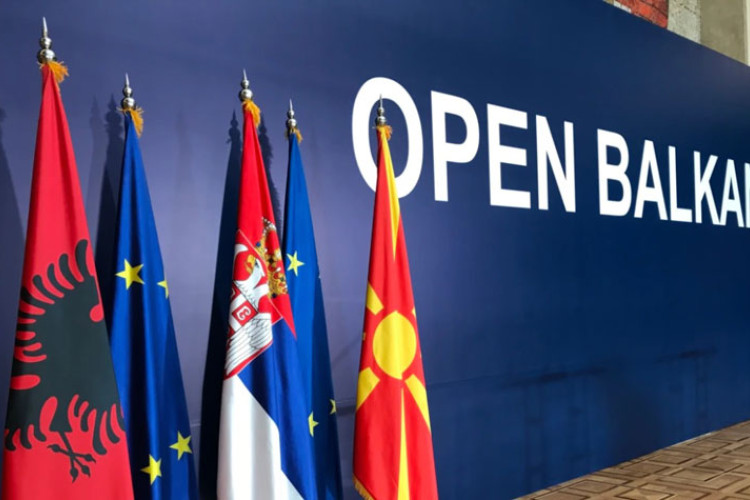
(SR) Izveštaj: Skrining Inicijative Otvoreni Balkan – analiza po zemljama

(SR) Doprinos nedržavnog sektora zvaničnom izveštaju o napretku implementacije COR-a
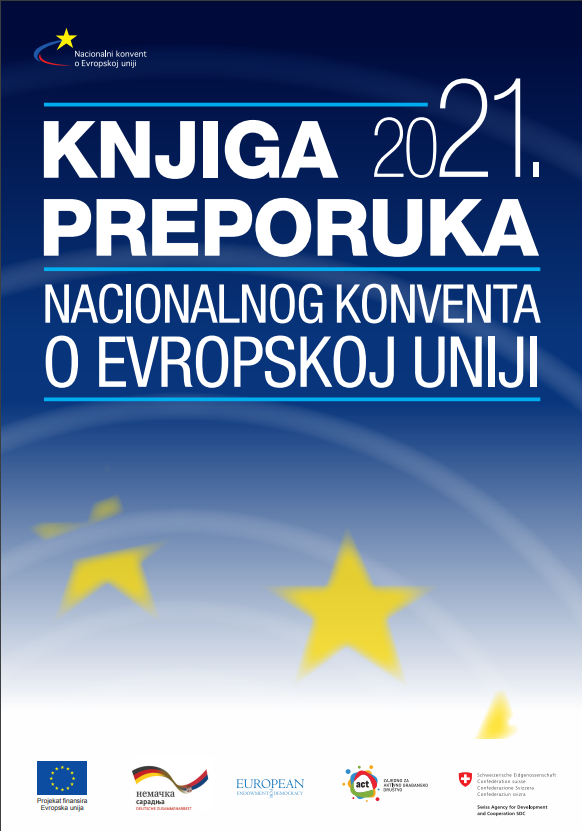
(SR) Poglavlja 17 i 32 Knjige preporuka Nacionalnog konventa o Evropskoj uniji
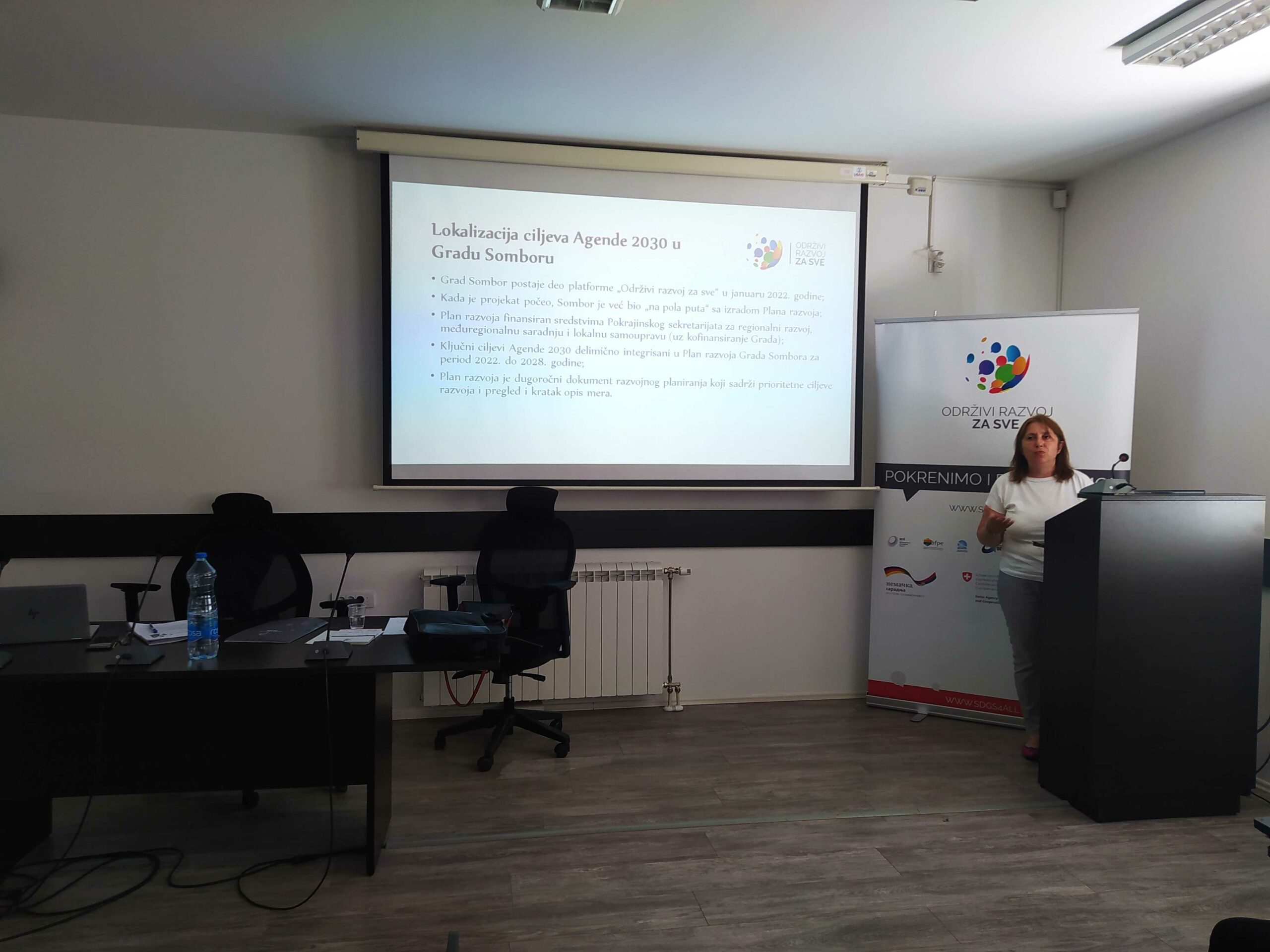
(SR) CEVES I TOC – JAČANJE PERSPEKTIVE LOKALNOG ODRŽIVOG RAZVOJA
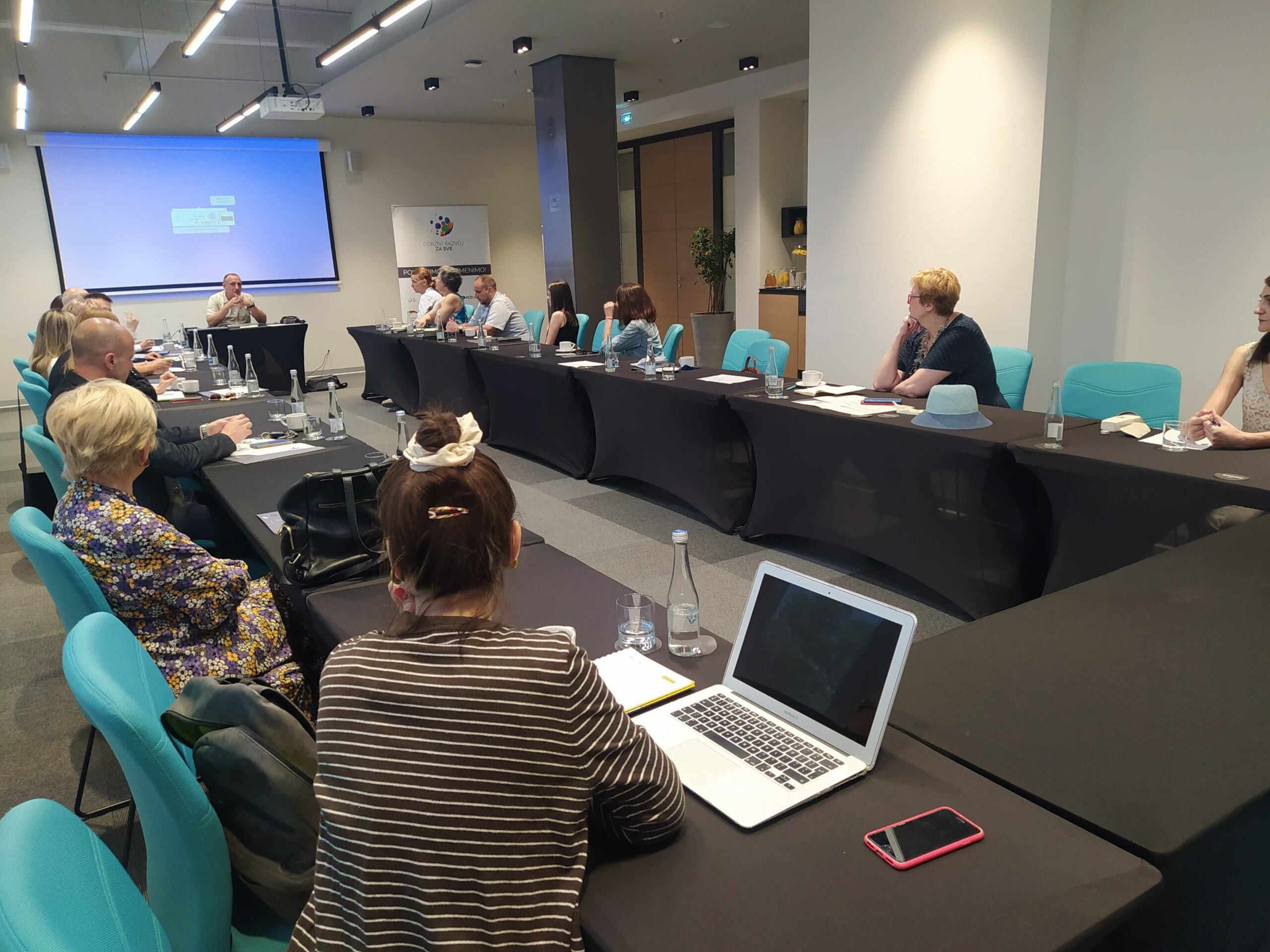
(SR) Tematska grupa: Vlasništvo lokalne zajednice nad svojim ekonomskim razvojem

SME Serbia 2030: SME 100 Expo – Conference-exhibition on the contribution of Serbian SMEs to sustainable development and further opportunities
The event SME Serbia 2030: SME100 Expo was held on June 1, 2022 in MIND Park in Kragujevac, with the aim of highlighting the development potential of the domestic economy embodied in carefully selected MSP100, leading in Serbia and small and medium by international standards. This event was an opportunity to empower and inspire each other, talk and connect, and launch initiatives that will support the development of SMEs and direct their strength towards the achievement of goals for the whole society.
First of all, we take this opportunity to warmly thank the Ambassador of Germany, Thomas Schieb, as well as the Ambassador of Switzerland, Urs Schmid, who came to Kragujevac to see and open the exhibition with words of encouragement for the effort to gather and hear the voice of leading SMEs.
Furthermore, you can watch a video of panel 1 on YouTube (slightly truncated, due to technical problems at the very beginning), where the participants pointed out that “hidden champions” play an extremely important role in the development of a powerful industrial country such as Germany, and that it is important to hear about hidden champions, not to remain hidden, because in that way increase the interest of young people in employment outside large urban agglomerations – where Champions are more frequent employers. We have also heard that in Ireland, a country known for its success in its efforts to attract quality foreign investors, there is also a separate government agency dedicated to the development of SMEs, and their internationalization. Finally, we heard that the hidden champions in Slovenia organized themselves in the “Slovenian business club”, and thus achieved that their word is heard very clearly and loudly when making public policies.
Then, at three round tables (which were hard to break for lunch!), a list of proposed initiatives was discussed, which you can still find on the next link. You can also find information about SME 100 at this link.
In the second, final panel, we heard that there are already some reform efforts moving in the direction of the proposed initiatives. As the most interesting, we single out the words of Mr. Chadez, the president of the PKS, who believes that the time has come to establish a truly independent and strategically positioned development bank in Serbia. He also announced greater efforts to adapt teacher profiles in Serbia to the needs of the economy. From Mr. Miljan Ždrale, EBRD Director for Southeast and Central Europe, we heard that it is really an anomaly that Serbia does not support export guarantees in any way, as well as the importance and possibilities of further development of capital markets that provide far more opportunities in neighboring countries. financing its SMEs. From the Assistant Minister Mr. Obradović, we have heard how important it is for the economy to propose very concrete proposals, as well as that there is a site “Entrepreneurship” which can now be used to inform about everything that the state is doing to support SMEs.
Finally, the event ended with a very inspiring panel – a conversation that our celebrated journalist Jelena Zorić had with Rade Šerbedžija and Dragan Bjelogrlić (who do not need a presentation) about how film and culture can go hand in hand with entrepreneurship. You can take a look at the site in the gallery and we will continue to publish the materials from the conference on CEVES channels
Once again, we owe our gratitude to the Sustainable Development for All Platform implemented by GIZ with the support of the Swiss and German governments, without which this event would not be possible, as well as to MIND Park for recognizing the idea and believing in it from the beginning. . We are also grateful to the Embassy of Slovenia in Belgrade for additional support and media partners: NIN, Nova Ekonomija, E-Kapija, Diplomacy & Commerce.
You can find SME 100 initiatives here.
For more information, you can visit the MSP 100 official website.
You can see videos of the conference panels on our YouTube channel.
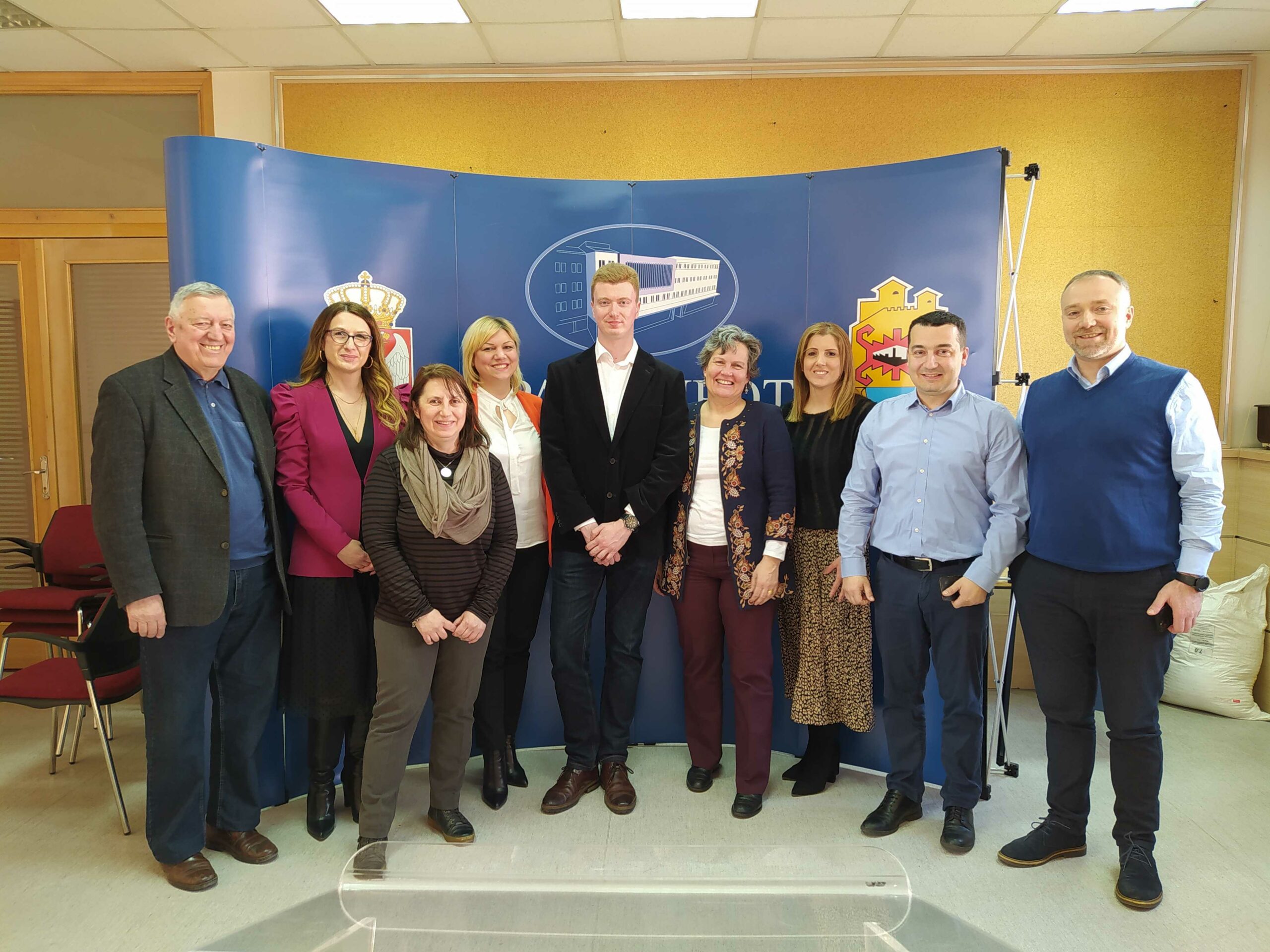
CEVES and TOC – strengthening the perspective of local sustainable development
CEVES and TOC – strengthening the perspective of local sustainable development
Within the “Sustainable Development for All” Platform, CEVES and TOC held a meeting in the city administration of Pirot on February 28, 2022 with representatives of the city and the Regional Development Agency South (RRA South), and presented the document “Findings and recommendations for the localization of the economic dimension of sustainable development in the Mid-Term Development Plan of the City of Pirot”. Among those present at the meeting were Kori Udovicki, president of CEVES, Goran Radisavljević, director of TOC, Miloš Colić, deputy mayor of Pirot, Marija Đošić, head of the office for local economic development and Dragana Stojanović, director of RRA South.
Ten-month research, in cooperation with city representatives, showed that the key goals of local economic development are: 1) positioning Pirot as a center and driver of economic development; 2) diversification of the economy and development of the private, especially SME sector and 3) utilization of natural wealth for the development of tourism, agriculture and green energy while improving the quality of the environment. The presentation of the analysis on the integration of the sustainable development goals of the 2030 Agenda into the Mid-Term Development Plan of the city of Pirot was followed by a discussion on past and future plans, as well as the challenges that the city of Pirot faces on its way to achieving economic development and the 2030 Agenda. The discussion generated ideas for initiatives on how the development can be improved, some of which are the need to strengthen the system of inter-municipal cooperation, as well as the possible improvement of the regulation of cooperatives in order to facilitate cooperation between small and medium-sized enterprises based on the Italian and other models. You can view the presentation at the following link
You can see more about the meeting at the link.
Supporting and Stimulating Growth of Competitive Industries
The Project “Supporting and Stimulating Growth of Competitive Industries” is funded by Serbian Chamber of Commerce (SCC) and it started in late April 2015. The aim of this project is to provide recommendations, necessary for creating targeted sectorial support, that will remove, or at least minimize the most binding constraints and untie untapped potential for growth of competitive industries. These recommendations should help Serbian government and Serbian Chamber of Commerce to quickly establish an improved information base for better targeting of industrial policies essential for revitalization of Serbian economic life, employment generation, and growth. The existing regular monitoring and projections of Serbian sector performances, needs and challenges are analytically weak and, more importantly, based on unreliable and incomplete economic statistics. However, this kind of information is essential for participants on Serbian market to act in a proper way.
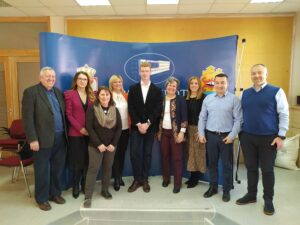

 SR
SR